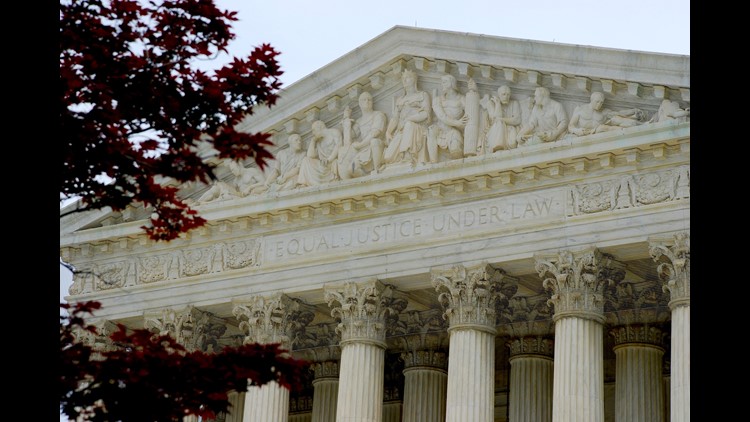WASHINGTON (CNN) — The grounds outside the U.S. Supreme Court have long been a place for protests, rallies, and other “expressive events.”
But exactly just what could be said and where the public could assert its First Amendment rights was a source of contention — at least until Thursday.
That’s when court officials issued new rules.
The regulations clarify a 60-year-old law blocking any demonstrations on court property, including the marble plaza that serves as the dramatic gateway to the building itself.
“The term demonstration includes demonstrations, picketing, speechmaking, marching, holding vigils or religious services and all other like forms of conduct that involve the communication or expression of views or grievances, engaged in by one or more persons, the conduct of which is reasonably likely to draw a crowd or onlookers,” says the revised Regulation 7, which was effective Thursday.
“The term does not include casual use by visitors or tourists that is not reasonably likely to attract a crowd or onlookers.”
The changes follow a federal judge’s ruling on Wednesday tossing out as unconstitutional the previous anti-demonstration rules.
Judge Beryl Howell said those laws were overly broad and vague, and could implicate any “group activity” on the grounds, including students wearing t-shirts with the name of their school, or tourists gathering on the plaza for a group photo.
Federal law gives individual buildings and agencies, including courts, discretion to set their own security and access procedures.
Harold Hodge, Jr., had challenged the regulations in court. The Maryland college student was arrested in February 2011 for silently carrying an anti-racism sign on the plaza, although court records show he did so peacefully.
A court police officer approached Hodge and three times asked him to leave the plaza, but he refused. He was then handcuffed and taken into custody. The charges were dropped after Hodge agreed not to return to the court for six months. He later sued, claiming his free speech rights were being violated and that he had a right to protest on government property.
A Virginia-based civil rights group, the Rutherford Institute, defended Hodge in his case.
The group’s president, John Whitehead, called the high court’s new rules set by its Marshal’s office “repugnant” to the guarantees enshrined in the Constitution.
Protests, rallies, speeches, and marches in front of the court often number in the hundreds of people, and are traditionally held on the public sidewalk on First Street, NE, between the court and the Capitol. Demonstrators gathered for days during the 2000 Bush v. Gore case over the disputed outcome of the presidential election.
And those on both sides of the abortion debate rally yearly in front of the court on the January anniversary of Roe v. Wade decision.
The Supreme Court had no comment on the rule changes.



